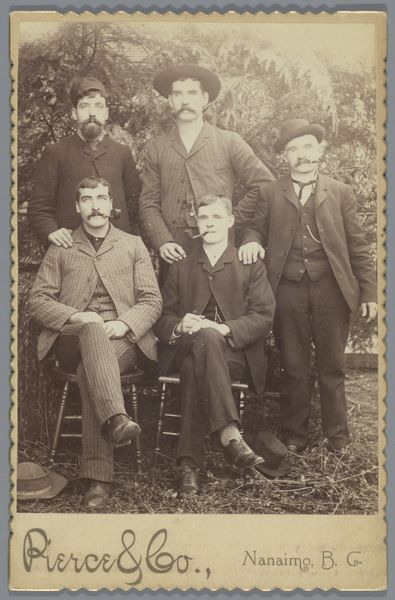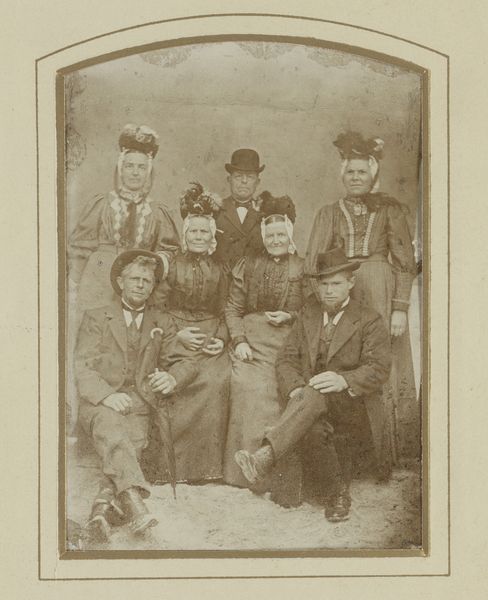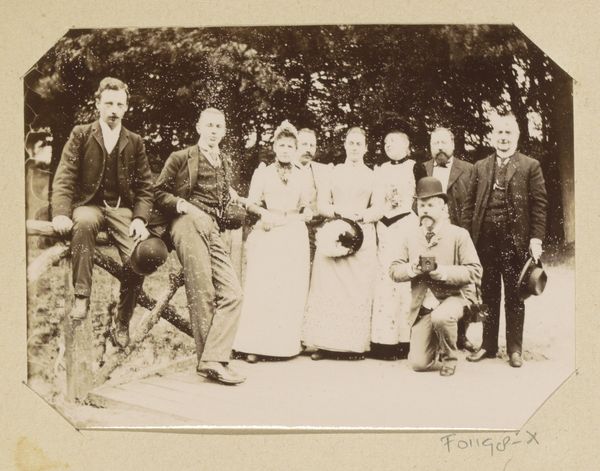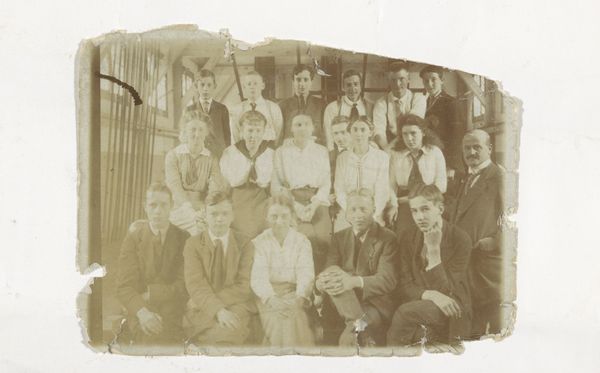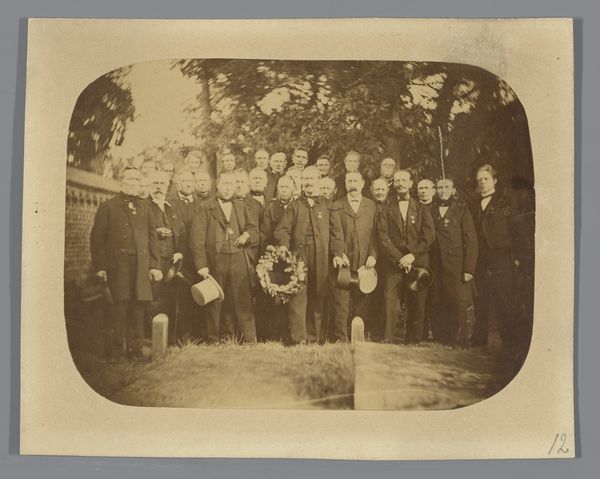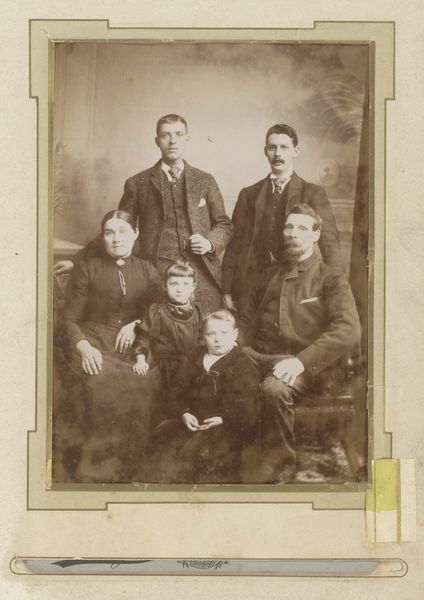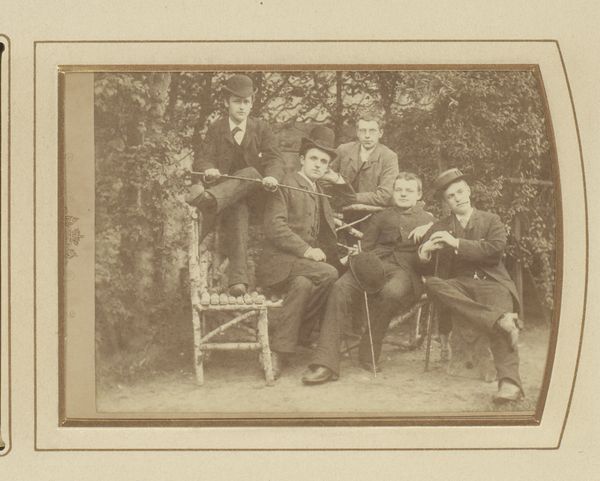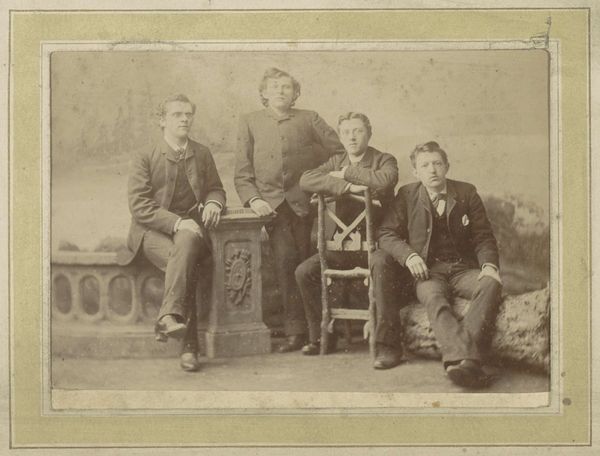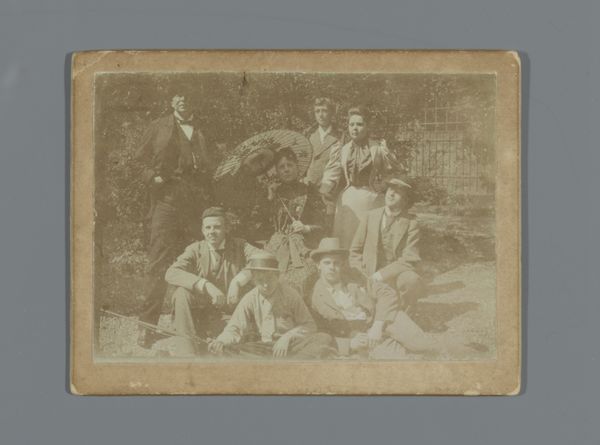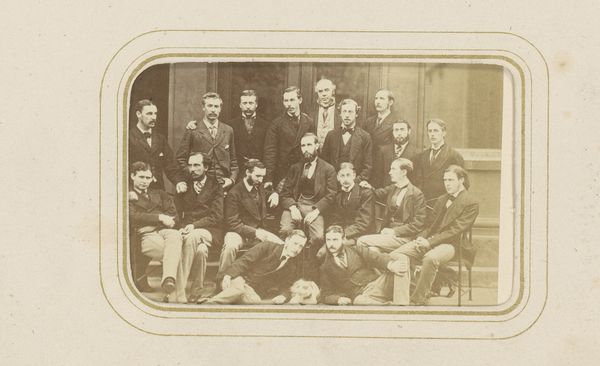
Groep mannen waaronder Joseph Cheetham (linksvoor) met tennisracket, cricketbat en jachtgeweren in Rusland 1903 - 1904
0:00
0:00
josephcheetham
Rijksmuseum
photography
#
portrait
#
photo restoration
#
archive photography
#
photography
#
historical photography
#
old-timey
#
yellow element
#
19th century
#
genre-painting
#
realism
Dimensions: height 119 mm, width 90 mm
Copyright: Rijks Museum: Open Domain
Editor: Here we have a photograph titled "Group of men including Joseph Cheetham (left front) with tennis racket, cricket bat and hunting rifles in Russia," dating from 1903-1904. It's currently housed in the Rijksmuseum. What strikes me is the rather staged composition and the odd juxtaposition of sporting equipment and hunting rifles. What do you see in this piece? Curator: Primarily, I observe a deliberate arrangement of forms. Consider the disposition of the figures: the seated men create a grounding horizontal, against which the standing figures impose a vertical rhythm. The textures, too, are quite varied given it's a single-tone photograph: note the smooth wood of the sports equipment contrasting with the rough texture of the tweed suits. Editor: That's a great point about the textures. It does seem that the photographer was aiming for a carefully constructed image rather than a candid shot. Why do you think the objects included contribute to our understanding of the subjects portrayed? Curator: The objects serve as signifiers of status and leisure. Observe how the cricket bat, tennis racket, and hunting rifles each communicate a specific activity. Furthermore, the textural differences serve to create a dialogue among the figures. Consider, for instance, how the eye travels between the man with the tennis racket and the ones holding rifles: can this movement reveal some correlation? Editor: That is really interesting. I hadn’t considered how the textures work to unite different individuals within the composition, highlighting their activities as status symbols. Thanks! Curator: Indeed. It's in the articulation of these elements—texture, line, form—that we decode the work's visual logic.
Comments
No comments
Be the first to comment and join the conversation on the ultimate creative platform.

